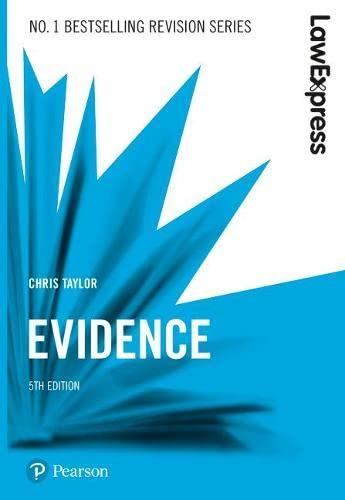Question
1.. Which of the following will not lead to dissolution?* a. Insanity of a partner b. Capital deficiency of a partner c. Bankruptcy of a
1.. Which of the following will not lead to dissolution?*
a. Insanity of a partner
b. Capital deficiency of a partner
c. Bankruptcy of a partner
d. Admission of a new partner
2.. Bill, Carl, and Dwayne are in a partnership. Dwayne decided that he wants to withdraw from the partnership by selling his interest to Ethel. Bill and Carl agreed to such. Bill's Capital account and Carl's Capital account*
a. will not be affected when Ethel is admitted.
b. will surely decrease.
c. will surely increase.
d. all of the above
3.. Who will receive the bonus if the investment of a new partner exceeds the new partner's initial capital balances?*
a. The new partner
b. The old partners, using their old profit and loss ratio
c. The old partners, using their new profit and loss ratio
d. The old and new partners in their new profit and loss ratio
4.. When Janang retired from the partnership, the final settlement of her interest exceeded her capital balance, under the bonus method, the excess is*
a. Recorded as an impairment of asset
b. Recorded as an expense
c. Does not affect the capital balance of the partners
d. Deducted from the capital balances of the other partners
5.. If cash payments to partners during liquidation are delayed until all non-cash assets have been sold, any cash remaining after all the partnership creditors have been paid is distributed*
a. according to the liquidator's choice
b. In the profit or loss ratio
c. In the amount equal to the partner's remaining interest
d. Any of the above
6.. Lump-sum liquidation can be best described as a scenario where*
a. assets are sold in one event only
b. liabilities are paid in one event only
c. cash available to partners is distributed to them at once
d. assets are sold at once and all the available cash is distributed to creditors and partners in one transaction
7.. In a partnership liquidation,*
a. creditors should be paid before the partners
b. gains and losses on the sale of assets are distributed to the partners on the ratio of their current capital balances,
c. the last entry credits the partners' Capital accounts.
d. all of the above
8.. Which of the following does not result in the dissolution of a partnership?
a. Death of a partner
b. Admission of a new partner
c. Retirement of a partner
d. Sale of inventory at less than its cost
9.. How is a partner's loss absorption potential computed?
a. Multiply her pre-liquidation capital balance by her P & L ratio
b. Multiply her pre-liquidation capital balance by her fractional share of profits and losses
c. Divide her pre-liquidation capital balances by her P & L ratio
d. Divide her P & L ratio by her pre- liquidation capital balances
10.. If a partner with a loan receivable from a partnership, receives cash during such liquidation, the payment is recorded with a debit in the partnership books to:
a. Loan Receivable from Mr.- X
b. Mr. X, Capital
c. Mr. X, Drawing
d. Loan Payable to Mr. X
Step by Step Solution
There are 3 Steps involved in it
Step: 1

Get Instant Access to Expert-Tailored Solutions
See step-by-step solutions with expert insights and AI powered tools for academic success
Step: 2

Step: 3

Ace Your Homework with AI
Get the answers you need in no time with our AI-driven, step-by-step assistance
Get Started


